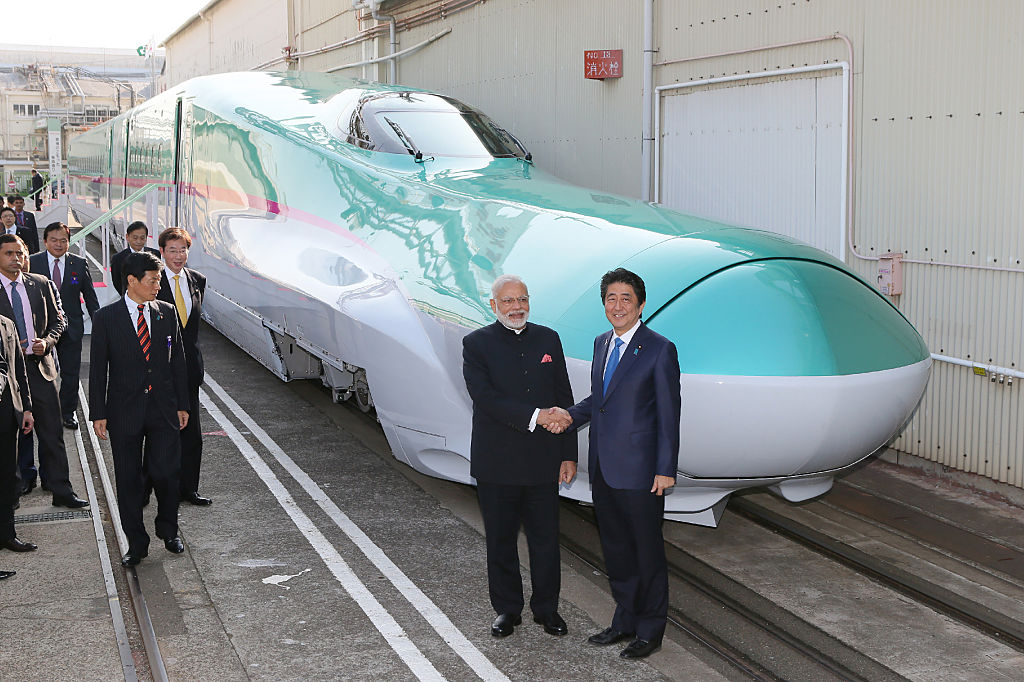- Wednesday, July 02, 2025
India has adopted Japan’s renowned Shinkansen bullet train technology for the high-speed connectivity between Mumbai and Ahmedabad.

By: Shubham Ghosh
INDIAN railway minister Ashwini Vaishnaw on Thursday (28) shared on X a video of the country’s first ballastless track system which is being developed for the bullet train project between the western cities of Mumbai, India’s financial capital, and Ahmedabad. He said significant progress has been made for the mega project which has a speed barrier of 320 miles per hour.
Vaishnaw informed that work for nearly 296 kilometres of piers and 153 kilometres of viaducts have already been completed. He added that more progress was expected in the ‘third’ government of prime minister Narendra Modi.
Read: When will bullet train run in India? Railway minister Vaishnaw gives major update
Bharat’s first ballastless track for #BulletTrain !
✅320 kmph speed threshold
✅153 km of viaduct completed
✅295.5 km of pier work completedMore to come in Modi 3.0 pic.twitter.com/YV6vP4tbXS
— Ashwini Vaishnaw (मोदी का परिवार) (@AshwiniVaishnaw) March 28, 2024
For the 508-kilometre-long project, India has adopted Japan’s renowned Shinkansen bullet train technology, which is known for safety and technological capabilities.
The first train is expected to run in 2026.
Read: PM Modi’s pet bullet train hits corruption bump, project chief sacked
Ensuring the highest safety standards for the #BulletTrain project, anemometers at 14 key locations across Gujarat and Maharashtra will be installed. pic.twitter.com/wcPM1PNs2H
— Ashwini Vaishnaw (मोदी का परिवार) (@AshwiniVaishnaw) March 26, 2024
Posting a video related to the project on X, the minister wrote, “Bharat’s first ballastless track for Bullet Train. 320 kmph speed threshold, 153 km of viaduct completed, 295.5 km of pier work completed. More to come in Modi 3.0”.
Ballastless track or ‘slab track’ is gaining popularity in many countries for laying of high-speed railway lines. In India, this is the first time that the J-slab ballastless track system is being used. It features precast track slabs that are equipped with fastening devices and rails.
Last weekend, Vaishnaw said at an award function that the bullet train project needs to be viewed from the perspective of “integrating economies”. In the first corridor of the project which is currently underway, the economies of the cities of Mumbai, Thane, Vapi, Baroda, Surat, Anand and Ahmedabad will become one single economy.
“So you can have breakfast in Surat, go and complete your work in Mumbai, and come back with your family in the night,” he said.
Modi, for whom the project is a dream, has pushed for its early completion and said his government’s focus is on creating 21st century infrastructure in the country’s financial capital. He said the ambitious project will make the infrastructure-building capacity stronger and cement Mumbai’s identity as “the city of dreams”.
The project, which has faced land-acquisition challenges, has an estimated cost of Rs 1.08 lakh crore of which the federal government will provide Rs 10,000 crore and the two states of Maharashtra and Gujarat, where the line is being laid, Rs 5,000 crore each. The remaining funds will be secured through a loan from Japan at a low interest rate.